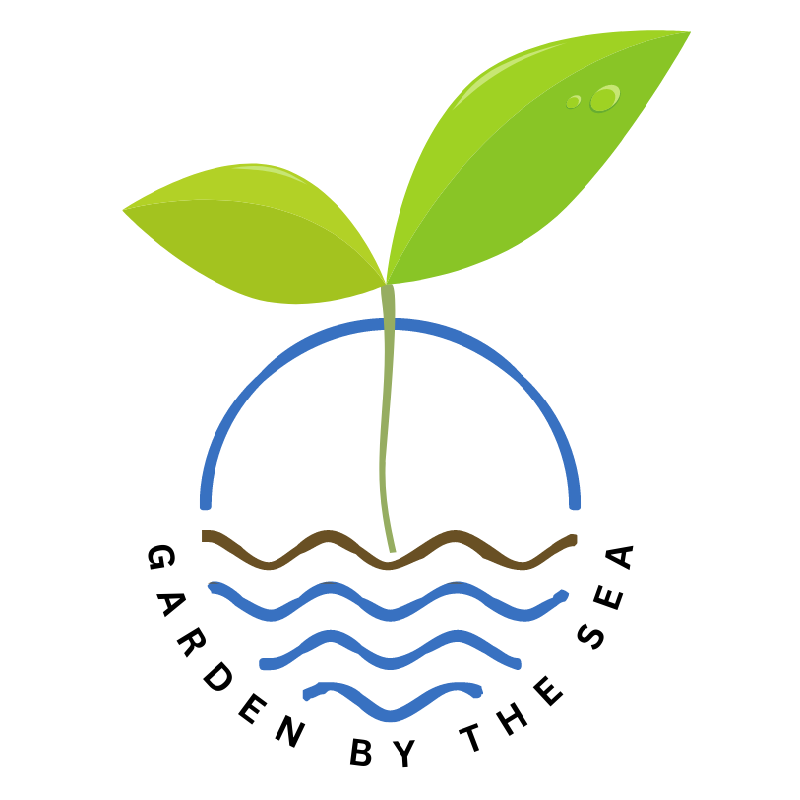Ocean Shores Vegetable Experiments:
Garden By The Sea (GBTS) operates Demo Beds for the Master Gardeners of Grays Harbor and Pacific Counties. We maintain four 4×8 foot beds in which we attempt various gardening experiments utilizing in the difficult climate of Ocean Shores. One bed contains perennial flowers that attract pollinators such as bees, butterflies, or birds. Another has annual and perennial flowers that discourage garden pests such as slugs, caterpillars, mosquitos, or spider mites, while still attracting pollinators. One bed features traditional one-season vegetables, while the last houses perennial vegetables.
We ago discussed Ocean Shores flower experiments, which were conducted in the pollinator flowerbeds. The objective then was to find colorful flowers to brighten up the gray of our city. Both beds did indeed provide lots of colorful flowers all season long.
By purposefully selecting pollinator flowers we were hoping to call more pollinating insects and birds into the garden to pollinate vegetable flowers. Pollination is necessary for plants to produce seeds and the corresponding fruits. Lots of pollinators are necessary for a successful harvest of edibles with seeds: asparagus, beans, berries, broccoli, cauliflower, cucumbers, peas, zucchini, etc.
Some pollinator flowers have the added benefit of discouraging garden pests. As you enter the Garden through the smaller gate you will encounter our pollinator bed designed to attract the insects we want to increase our vegetable harvest while discouraging pests such as: caterpillars, slugs, flies, fleas, spider mites, and aphids.
We had identified a problem with cabbage worms in the garden (the caterpillar stage of a small white winged butterfly) which were eating broccoli, Brussels sprout, cabbage, cauliflower, and kale leaves, thus destroying our harvest. So we included in the test bed flowers that were “supposed” to deter these: borage, hyssop, mints, rosemary, and thyme. To some of us it subjectively “seemed” that there were fewer cabbage worm problems this season, but we don’t have an objective way to measure results yet.
Next spring, we are hoping to spread both types of pollinator flowers throughout the garden by asking gardeners to include a few deterrent/pollinator flowers in their vegetable beds. Although it will be tricky to ascertain if we are getting larger and healthier harvests, the inclusion of pollinator flowers is considered best-practice gardening. (And besides, it makes for prettier garden beds!)
This season, we planted our single season vegetable bed with three types of garlic (Elephant, California Soft-Neck, and Organic Garlic) and two types of beets (Early Wonder and Bulls Blood.) The garlic was planted in February and all varieties were harvested in August.
Both varieties of beets were spectacular. With only two 8-foot rows we had 50-60 pounds, most of which was donated to Ocean Shores’ Food Bank. Both varieties were insect and disease free, and sweet and tender. If picked early enough the beet greens were also sweet and tender. Definitely put both garlic and beets on your list of to-try vegetables.
Our perennial vegetable bed has perhaps been less successful. Advantages of perennial vegetables are less expense and work, since you don’t have to replant them each season. Once established and maintained, more carbon can be sequestered in the plants and soil, thus reducing the amount of greenhouse gasses released into the atmosphere. In difficult climates like Ocean Shores, cool season perennials are generally favored over more temperamental annuals. It’s a matter of finding the right plants to take advantage of our cooler but long 300-day growing season. We’re not quite there yet.
Scarlet Runner Beans are rated perennial and should return each season. Although we had a delicious, reasonable harvest from our small sample in each of the last two years, the plants died at season end. We’ve tried kale, radicchio, and Swiss chard, all of which returned for a second season but were bitter tasting and rather tough.
Last season we planted two varieties of asparagus (Purple Passion and Jersey Supreme), which need three years before the first harvest. Only about half of them returned, so we replanted. None of the plants looked very strong although each variety was rated to do well in cool, wet climates. Next season we’ll focus on them and perhaps move or completely remove them if they don’t improve.
We tried various herbs such as rosemary, thyme, oregano and sage and they all did well, but they are also good pollinator flowers along with lavender and curry so we decided to move them to the flower gardens.
After removing the herbs and bitter leaf vegetables, we filled in the space this fall with Egyptian Walking Onions and fall blooming Saffron Crocus, both of which are already up. The crocus should be blooming soon. We’ll never get enough saffron pollen to “eat” but it was a last minute experiment. The onions won’t be ready for harvest until next season. None of us was familiar with this variety and it will be interesting to try something new and see if the plants do “move” around the garden as their name implies.
—————–
The Garden By The Sea (GBTS) Ocean Shores Community Garden is located behind the Galilean Lutheran Church. We have deer fenced garden plots available for rent each March.
For questions, comments or more information about topics in this article you can contact Dauna Koval at dauna@gardenbytheseaoceanshores.org
This article was originally printed in The Ocean Observer, November 2019.



